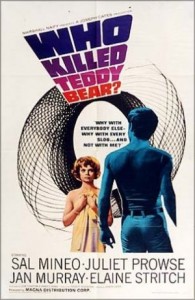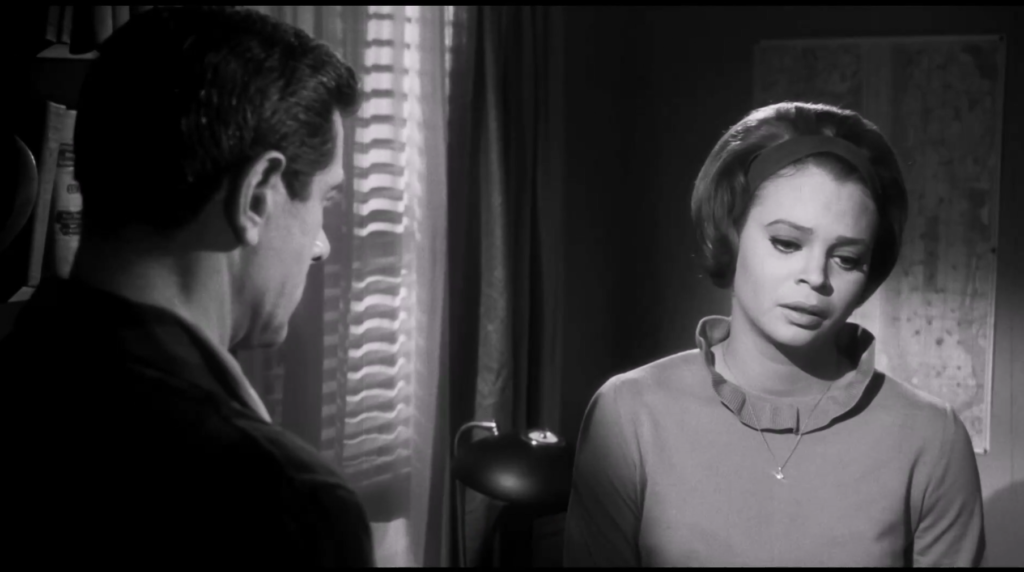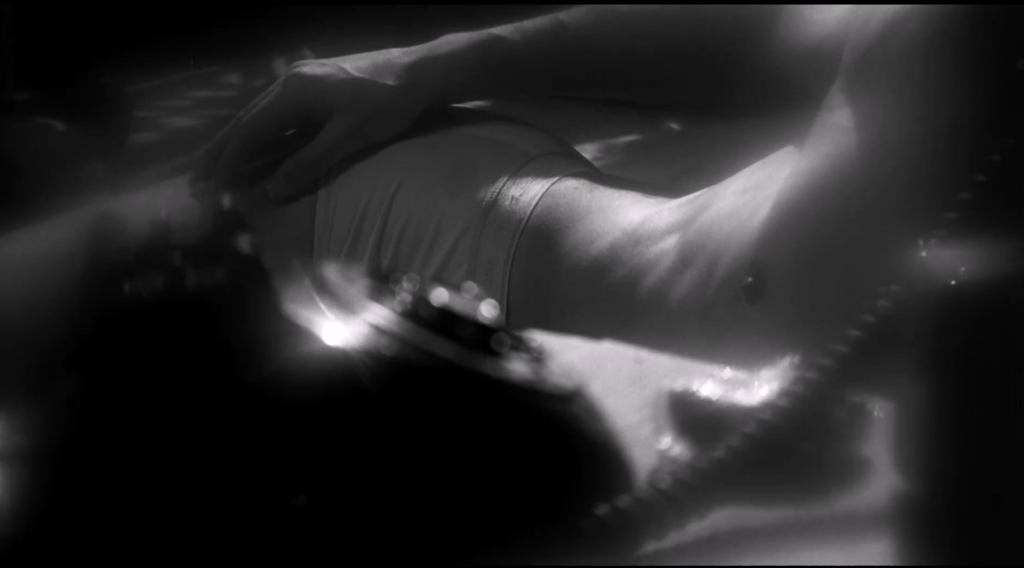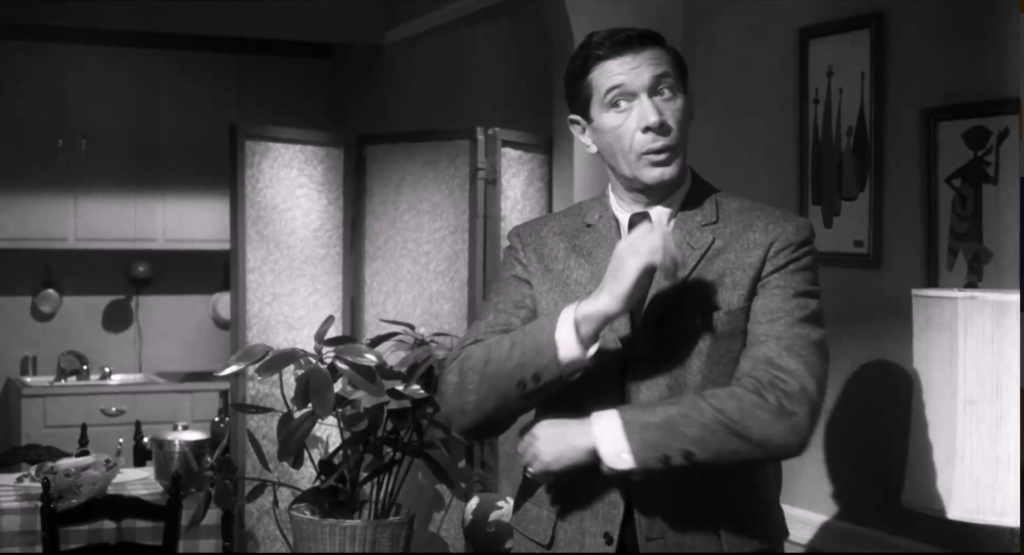“Norah, don’t you see? I’m with you everywhere.”
|

Synopsis:
A disturbed busboy (Sal Mineo) makes anonymous phone calls to his d.j. co-worker Norah (Juliet Prowse); meanwhile, Norah’s case is investigated by an eager police detective (Jan Murray) who specializes in sexual perverts.
|
|
Genres:
- Detectives and Private Eyes
- Obsessive Love
- Sal Mineo
- Peeping Toms
Review:
Joseph Cates’ atmospheric b&w stalker film features fine performances (especially by toothy dancer Juliet Prowse); smart dialogue; and a creepy turn by Sal Mineo as the troubled young man whose traumatic childhood — in typical mid-century Freudian cine-analysis (see The Mark, 1961) — has led to his frightening sexual disturbances. Framed as a film about desire, every character except Norah is depicted as wanting something from someone else: Detective Madden hopes to use Norah to find her stalker (as well as every stalker in town) in retribution for his wife’s rape and murder years earlier; Norah’s boss (Elaine Stritch) wants to comfort her in a more-than-maternal fashion; Mineo’s brain-damaged younger sister wants him to take care of and play with her; and Mineo, of course, wants Norah’s body. There ultimately isn’t much new in this tale of sexual obsession, but Prowse makes us care about her fiercely independent character, and we watch with concern to see what will happen to her next.
Redeeming Qualities and Moments:
- Juliet Prowse as Norah

- Atmospheric cinematography

- Jan Murray as the obsessed detective determined to nab Norah’s predator

- Elaine Stritch as Norah’s sympathetic — perhaps too sympathetic — boss

- Effective use of New York City locales


- Smart dialogue
Must See?
No. While this is an atmospheric, well-acted thriller, Who Killed Teddy Bear is ultimately not must-see viewing.
Links:
|
One thought on “Who Killed Teddy Bear (1965)”
This could go either way, a must or not – but for a few reasons, I’m going with must-see. Somehow there’s not another film like it (esp. from its period); it has a mainly-against-type cast (with entertainers Prowse and Stritch and comedian Murray all very serious here), and high cult status (there’s an online petition for DVD release). Is it a great movie?; no, in many ways it’s clumsy. But, from its opening Bacharach/David-sounding theme song on, it hooks you – and it’s not easily forgotten. It’s a lurid, psychosexual smorgasbord.
As noted, it’s very much helped by atmospheric photography (assisted by the terrific Michael Chapman, who also worked on ‘Klute’ and shot ‘Taxi Driver’: two films that seem directly influenced by ‘WKTB’). Several sequences are dream-like: the opening credits; a freeze which pinpoints the stalker; a midway, off-angle sequence in which Mineo’s mother (apparently) ‘invites’ him; a touching pool scene where Mineo fantasizes himself as happy with Prowse; etc.
Performances:
Murray is rather mediocre but he tries hard.
Stritch is a terrific choice as the defensive, not-on-to-herself lesbian, but she needed more good lines.
The film really belongs to Mineo and Prowse. Mineo is so adorable in this, it’s all the more tragic that his character doesn’t allow his surface personality to work for him. He’s just been too damaged by “the ones that wanna lead you on.” (His workout scene is startling – and draw your own conclusions.) Oddly, when Mineo and Prowse dance together (to ‘It Could Have Been Me’, naturally), you can seem them as a couple.
Much is memorable in the dialogue but of the best is a pick-up line a customer directs at Prowse as he undresses her with his eyes: “Wadda ya say? I just wanna borrow it. Maybe rent it if I have to.” (IT?!)
‘WKTB’ would work very well on a double-bill with ‘Midnight Cowboy’.